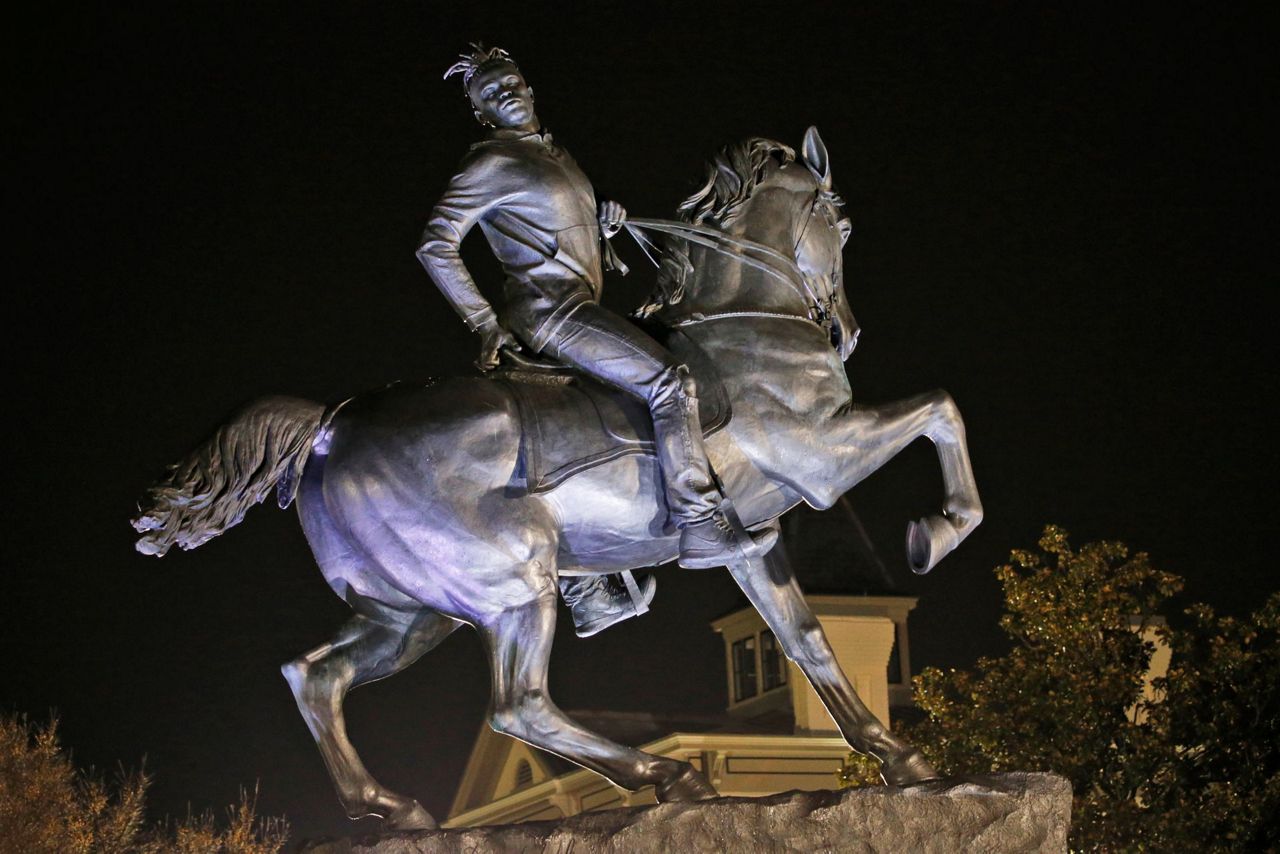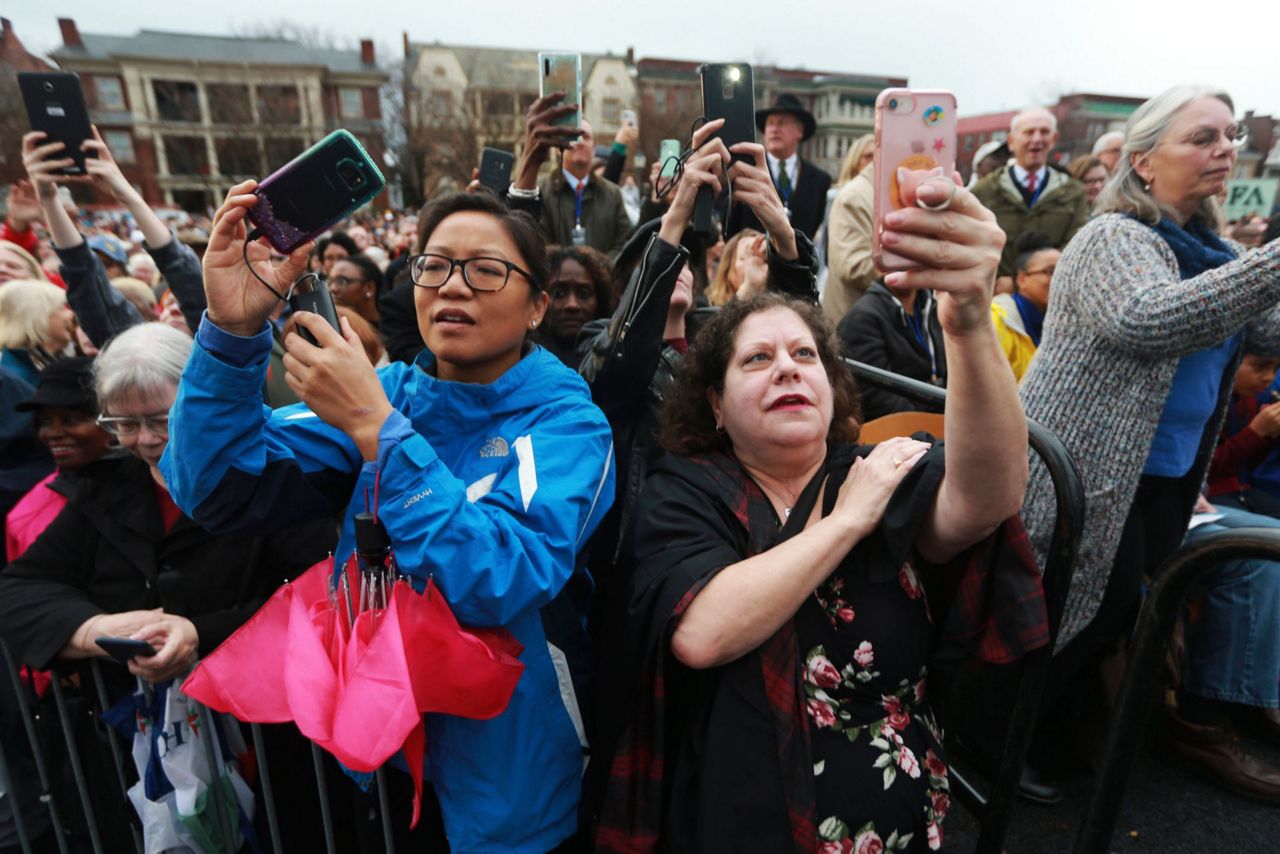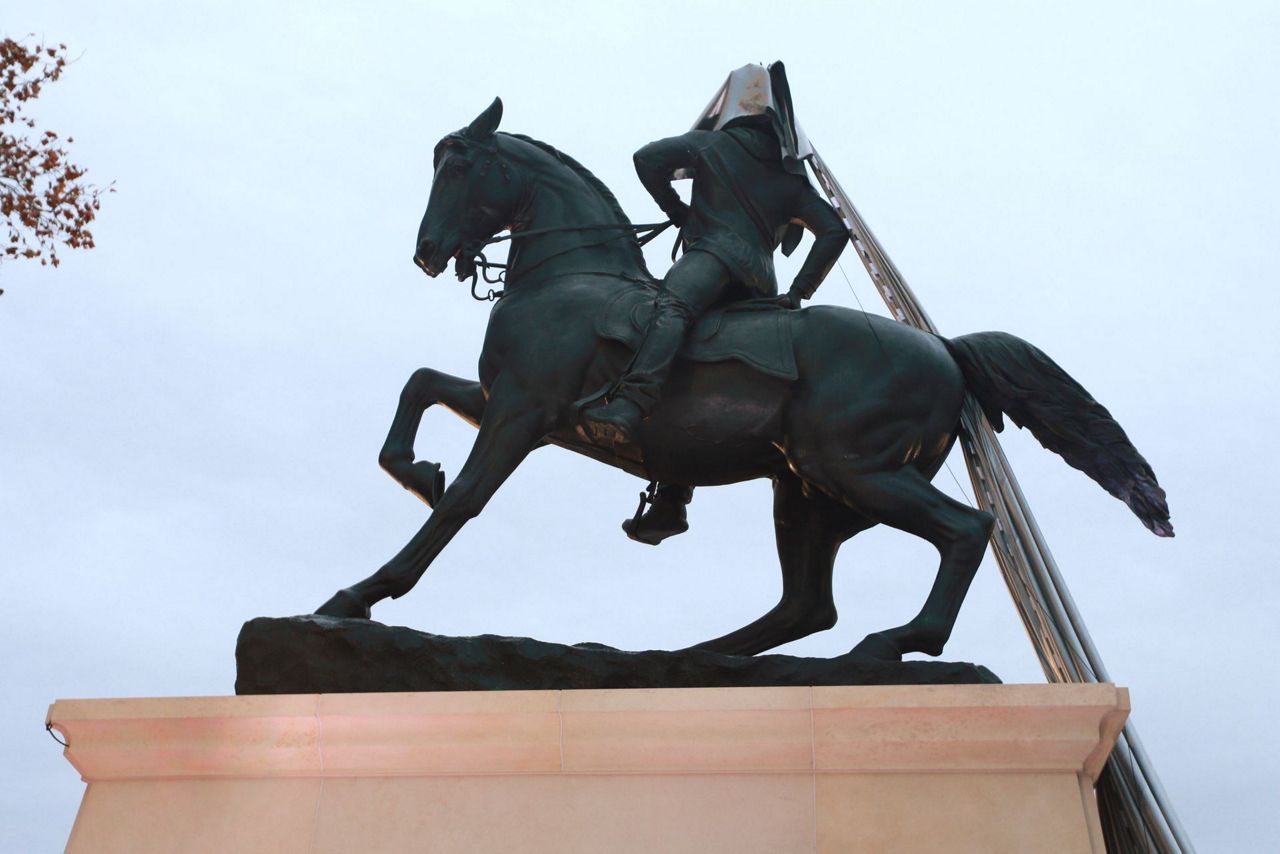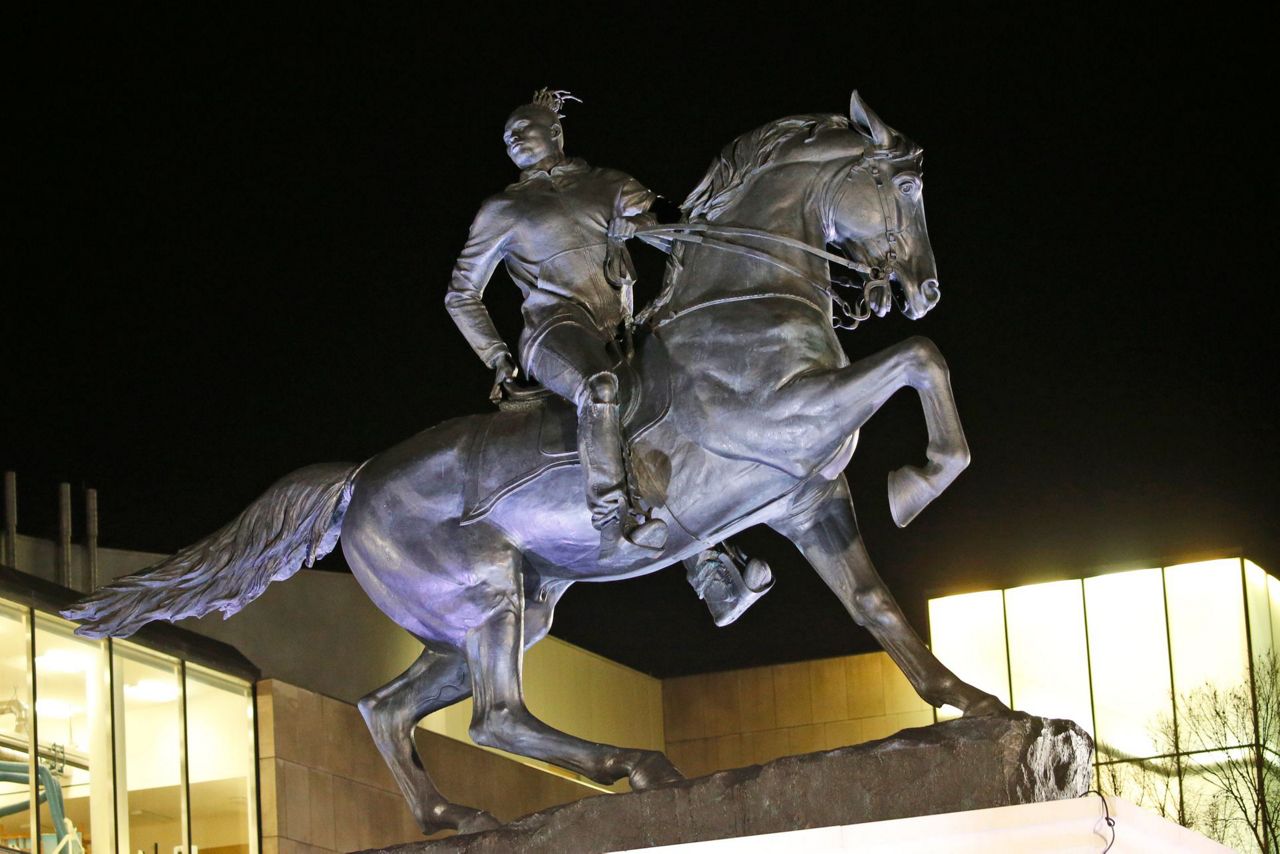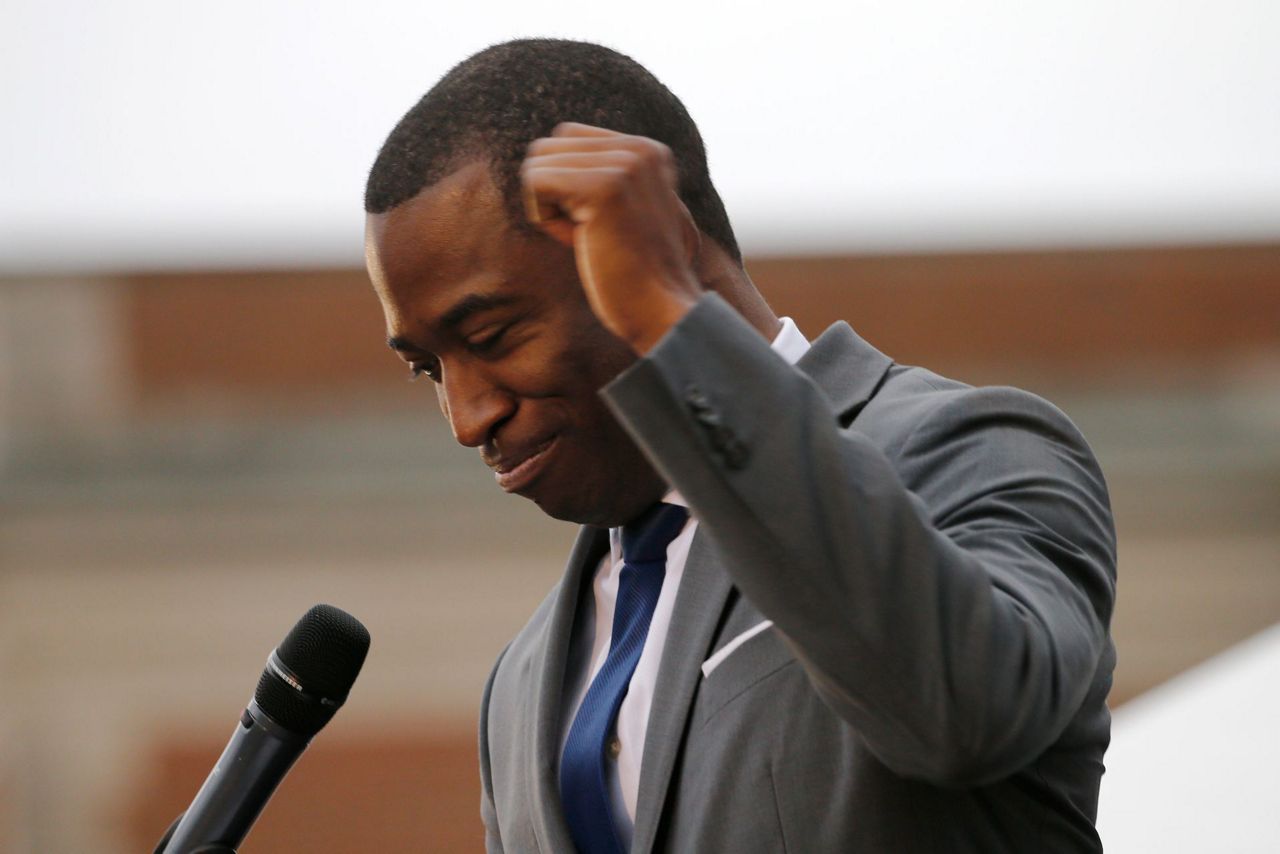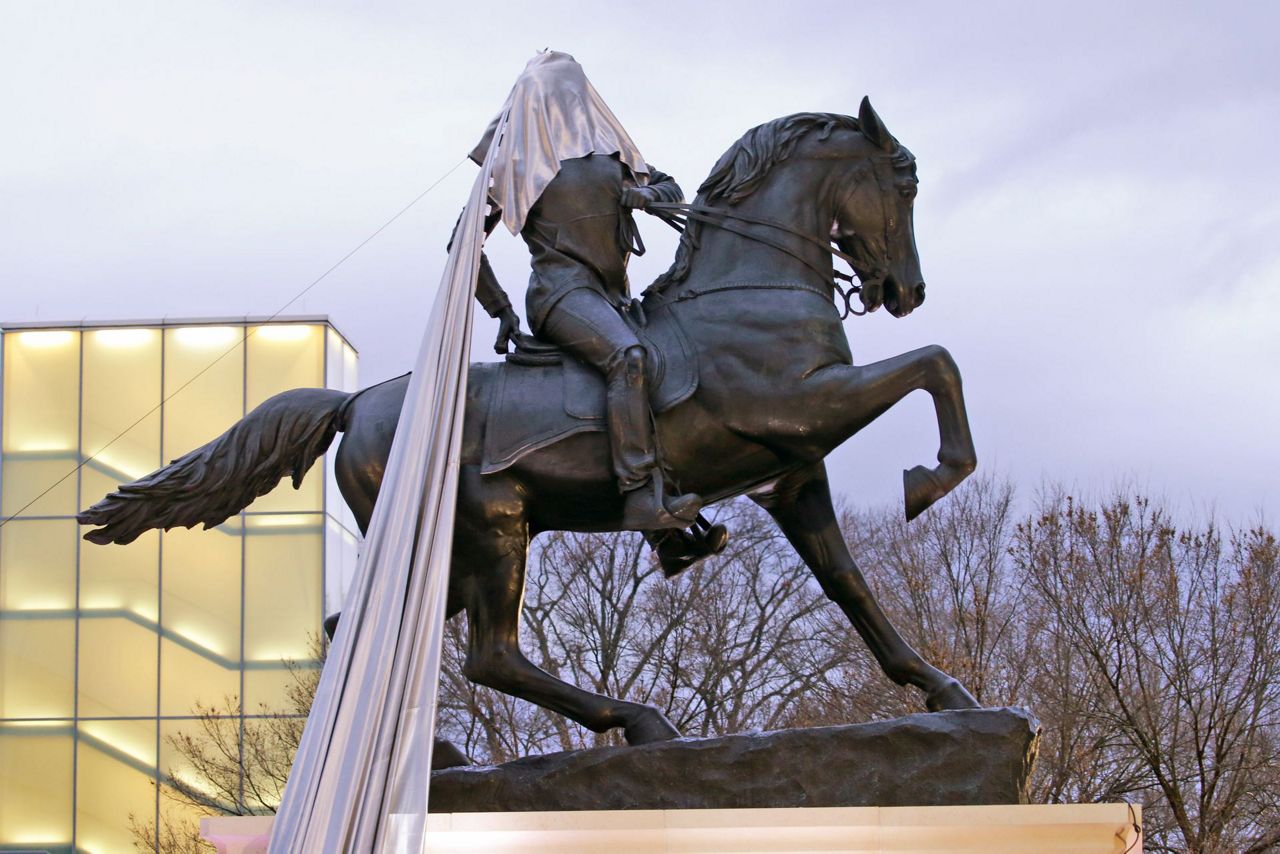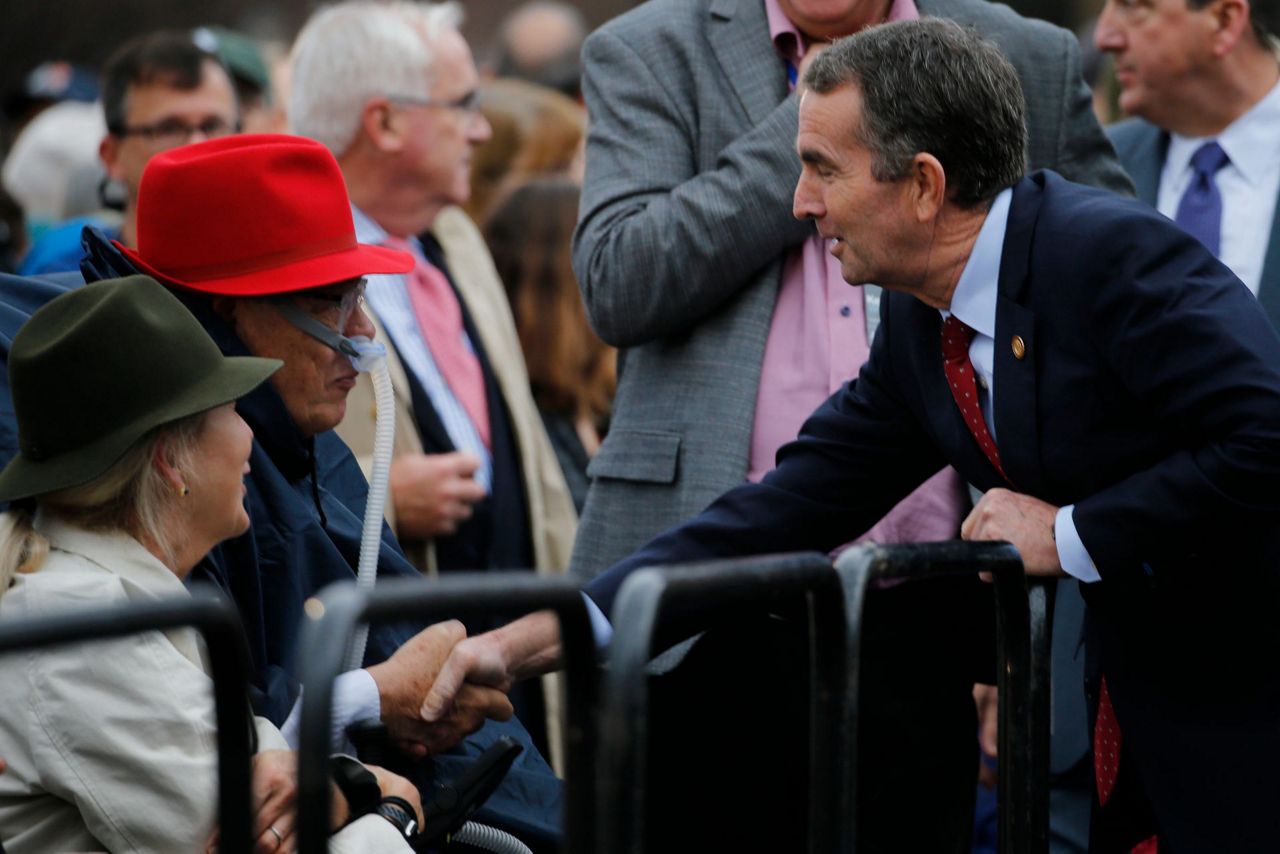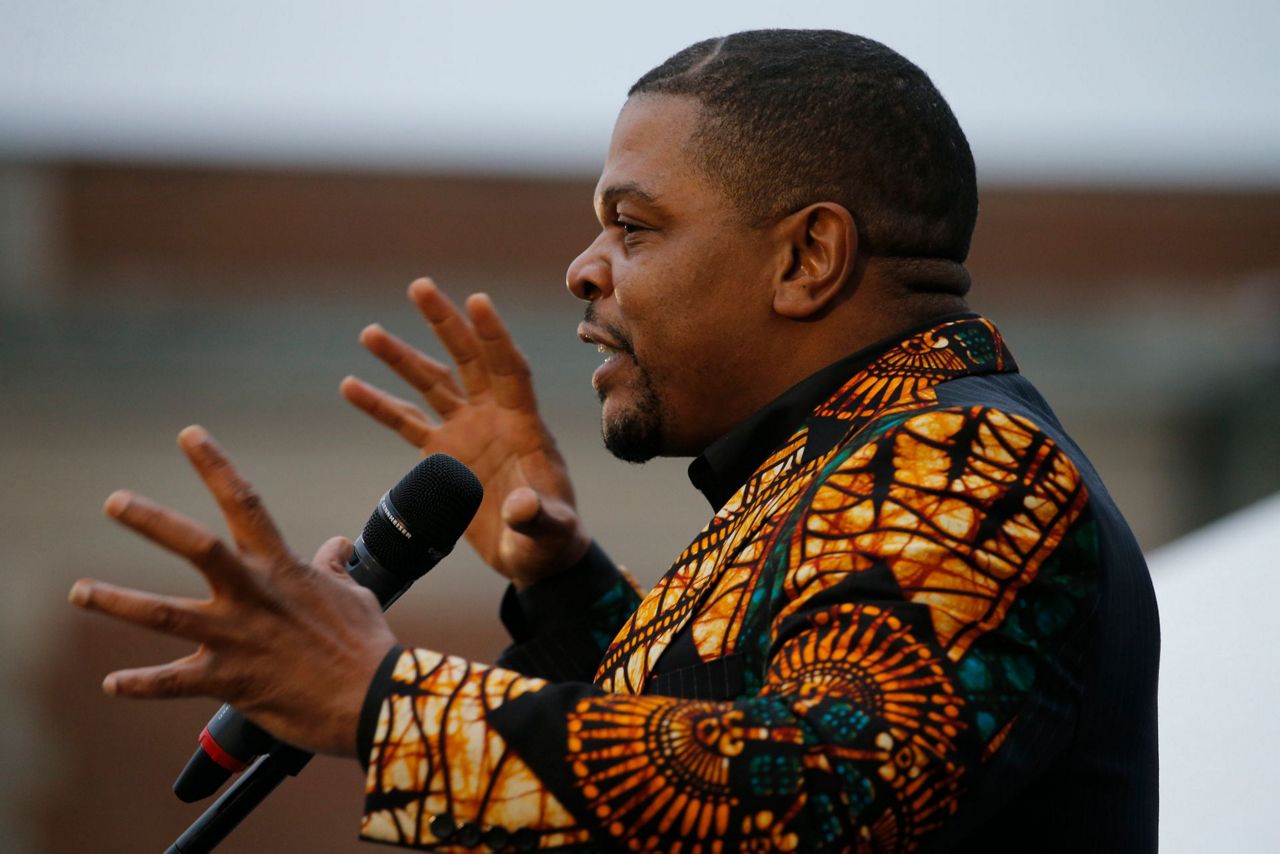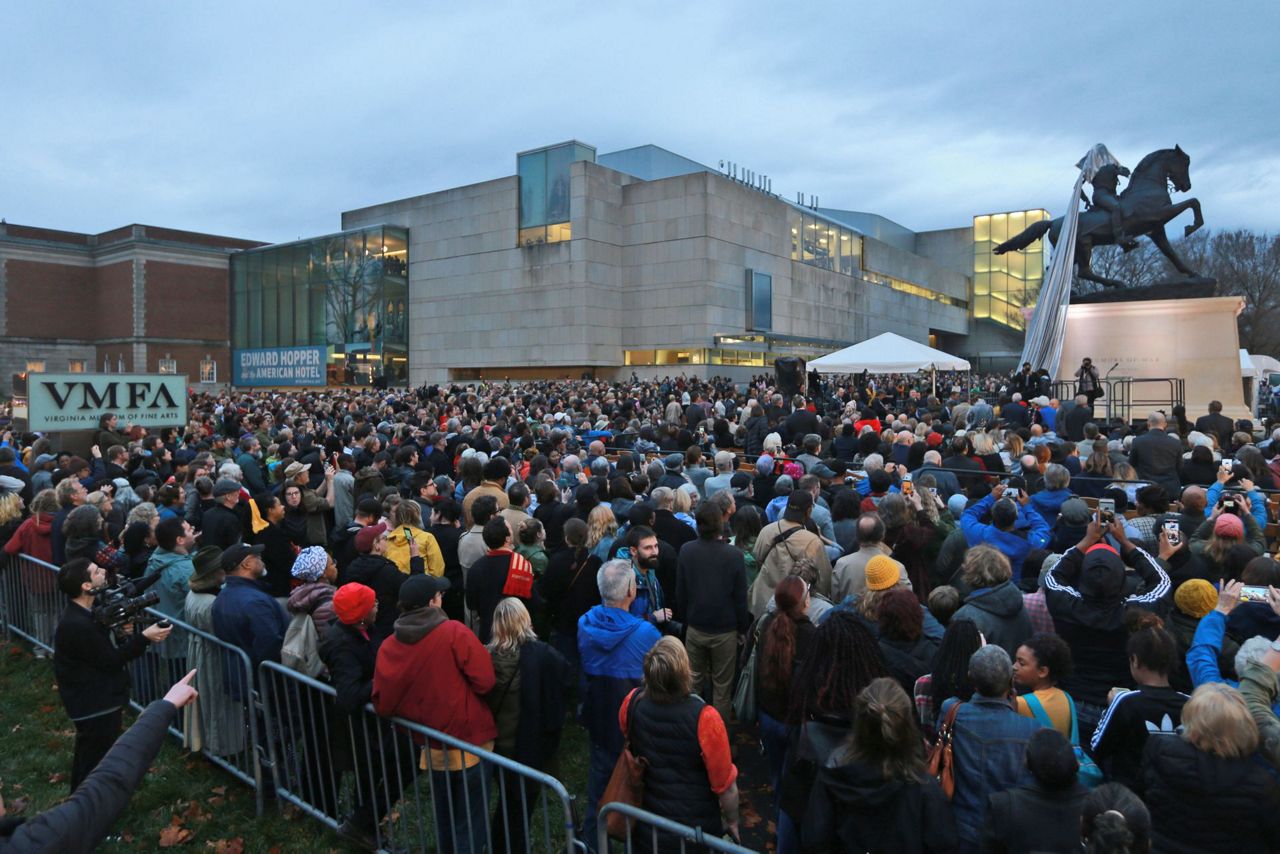RICHMOND, Va. (AP) — A massive bronze sculpture of a young black man with dreadlocks astride a muscular horse was permanently installed Tuesday in Virginia’s capital city, not far from one of the country’s most prominent displays of Confederate monuments.
Thousands of people crowded the lawn of the Virginia Museum of Fine Arts as “Rumors of War" was unveiled. The piece, the first public sculpture by prominent artist Kehinde Wiley and Wiley's largest work to date, was previously on display in Times Square.
"Rumors of War” was Wiley’s response to the Confederate monuments that pepper the U.S. and the South in particular. The new monument arrived amid an ongoing debate across the country about what do with Confederate imagery and as Richmond grapples with how to tell its history as both the capital of the Confederacy and a former hub of the international slave trade.
“It's a story about America 2.0,” the artist said, adding he was overwhelmed by the size of the crowd.
Wiley is known for his regal portraits of black Americans, including one of former President Barack Obama that’s displayed at the National Portrait Gallery. He said he was inspired to create “Rumors of War” after seeing a massive equestrian monument honoring Confederate Gen. J.E.B. Stuart during a visit to Richmond in 2016. The Stuart monument is one of five giant Confederate statues along Monument Avenue, a prestigious residential street and National Historic Landmark district.
Both the Stuart statue and “Rumors of War” feature horses in virtually the same pose, with one front leg lifted. Both riders are turned to the side. But instead of Civil War-era garb, Wiley’s equestrian is dressed in streetwear: a hoodie, ripped jeans and sneakers, with dreadlocks gathered atop his head.
Virginia's governor hailed the twist on history as he addressed the crowd Tuesday.
“People in Richmond will recognize its shape and its form, but it depicts a person who looks different from every other statue in this city — and there are a lot of them," Gov. Ralph Northam said. "And so today we say welcome to a progressive and inclusive Virginia.”
Wiley said the statue wasn’t a tribute to any one individual.
Instead, he said, it is about “about black men and their place in this society. And in a much broader way, a society that can say yes to black men and their place in this society.”
Mounted on a large stone pedestal, Wiley's sculpture is just blocks from Monument Avenue. It is prominently displayed along the city’s historic Arthur Ashe Boulevard, a thoroughfare renamed in honor of the black tennis great earlier this year. It sits next to the headquarters of the United Daughters of the Confederacy.
The silver, shimmery drape that covered the statue got caught in the figure's hair during Tuesday's unveiling. Hundreds of people stood for about 35 minutes in cold, drizzling rain until a firefighter clambered up a ladder and finally pulled the covering off, to a roar from the crowd.
Richmond's mayor told the crowd the statue shows the city that is moving on from its past.
“See, Richmond, we have a complex history," Mayor Levar Stoney said. "We’ve got the good, the bad and the ugly. All right? But this monument firmly establishes that our city is not living in the past but embracing the future and the good.”
Stoney noted that Richmond has changed even since Wiley visited in 2016. He noted the addition of a statue honoring black banking pioneer and community leader Maggie Walker, a women's monument at the state Capitol and the renaming of Arthur Ashe Boulevard.
But the city has moved slowly on deciding the future of Monument Avenue.
A commission Stoney formed in 2017 to study the issue made nonbinding recommendations that called for removing a statue of Confederate President Jefferson Davis, leaving the rest and adding historical context. A second commission has been tasked with figuring how to implement those recommendations.
Other Virginia cities have been hamstrung in their attempts to remove or relocate Confederate monuments because of a state law that protects memorials to war veterans. That issue could get another look in January after the reconvening of the state legislature, which is controlled by Democrats for the first time in a generation.
The issue has largely split the legislature along party lines, and at least one Democratic delegate has pledged to introduce a bill that would give localities control over what to do with their monuments.
“Rumors of War” was purchased with funds from private donors, said Alex Nyerges, the museum's director, in an interview after the unveiling. It cost $2 million, and the museum spent about $600,000 to $700,000 more in expenses, including the cost of having the 30-ton piece shipped and installed.
While museum staff initially thought there might be a public backlash to the statue, Nyerges said “that just hasn't happened."
Museum officials estimated there were more than 3,400 visitors present Tuesday.
Among them was Hannah Buchanan, a 20-year-old student at Virginia Commonwealth University, who said she thought the statue and its placement in proximity to Monument Avenue were significant.
“I think it speaks louder than any words that could be said about the transformation that we want to see for this city," she said.
Copyright 2019 The Associated Press. All rights reserved. This material may not be published, broadcast, rewritten or redistributed.



